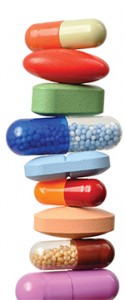
ajt/shutterstock.com
Opana ER Pulled from U.S. Market
Last month, the U.S. Food and Drug Administration (FDA) asked Endo Pharmaceuticals to remove oxymorphone hydrochloride extended release (Opana ER) from the U.S. market due to public health consequences related to abuse. The agency has concerns that the risks presented by the treatment do not outweigh its benefits.1 On July 6, after careful consideration, Endo Pharmaceuticals announced that it will follow the June 2017 FDA ruling and will voluntarily withdraw Opana ER from the U.S. market.2
The company will work with the FDA to coordinate the organized removal of Opana ER from the market to minimize treatment disruption for patients, enabling patients to receive sufficient guidance from their healthcare providers about alternate pain management. Patients taking Opana ER should discuss treatment options with their physician, and prescribers should contact patients to discuss alternative treatment options.
Endo International continues to believe in the favorable benefit–risk profile of Opana ER for managing severe pain in appropriate patients—those who require a daily, around-the-clock, long-term opioid treatment and for whom alternative treatment options are inadequate. Endo International also remains confident in the clinical research and data demonstrating the treatment’s safety and efficacy.
Upadacitinib Meets Study Endpoints to Treat RA
Upadacitinib (ABT-494) is an oral, once-daily JAK1 inhibitor in Phase 3 clinical trials for treating rheumatoid arthritis (RA).3 The SELECT Phase 3 trial by the manufacturer AbbVie is evaluating the treatment in more than 4,000 patients with moderate to severe RA in six different studies.
A recent clinical trial, SELECT-NEXT, evaluated upadacitinib in patients with moderate to severe RA who do not adequately respond to treatment with conventional synthetic disease-modifying anti-rheumatic drugs (csDMARDs).4 After Week 12, the study met its primary and secondary endpoints. The primary endpoints included ACR20 and low disease activity. Key secondary endpoints included ACR50, ACR70 and clinical remission. These results were achieved by patients taking 15 or 30 mg upadacitinib once daily.
For patients receiving 15 or 30 mg upadacitinib, the Week 12 results showed a 64% and 66% ACR20 response rate, respectively, compared with a 36% achievement in ACR20 for placebo-treated patients. The ACR50 response rates for upadacitinib-treated patients were 38% and 43%, respectively, vs. 15% for placebo-treated patients. And the ACR70 responses for upadacitinib-treated patients were achieved in 21% of patients treated with 15 mg and 27% of patients treated with 30 mg vs. 6% of placebo-treated patients. Overall, low disease activity was achieved in 48% of upadacitinib-treated patients receiving either dose compared with 17% of placebo-treated patients. Clinical remission was achieved by 31% of 15 mg upadacitinib-treated patients and 28% of 30 mg upadacitinib-treated patients. Only 10% of placebo-treated patients achieved clinical remission. All study endpoints were considered statistically significant (P<0.001) compared with placebo.

